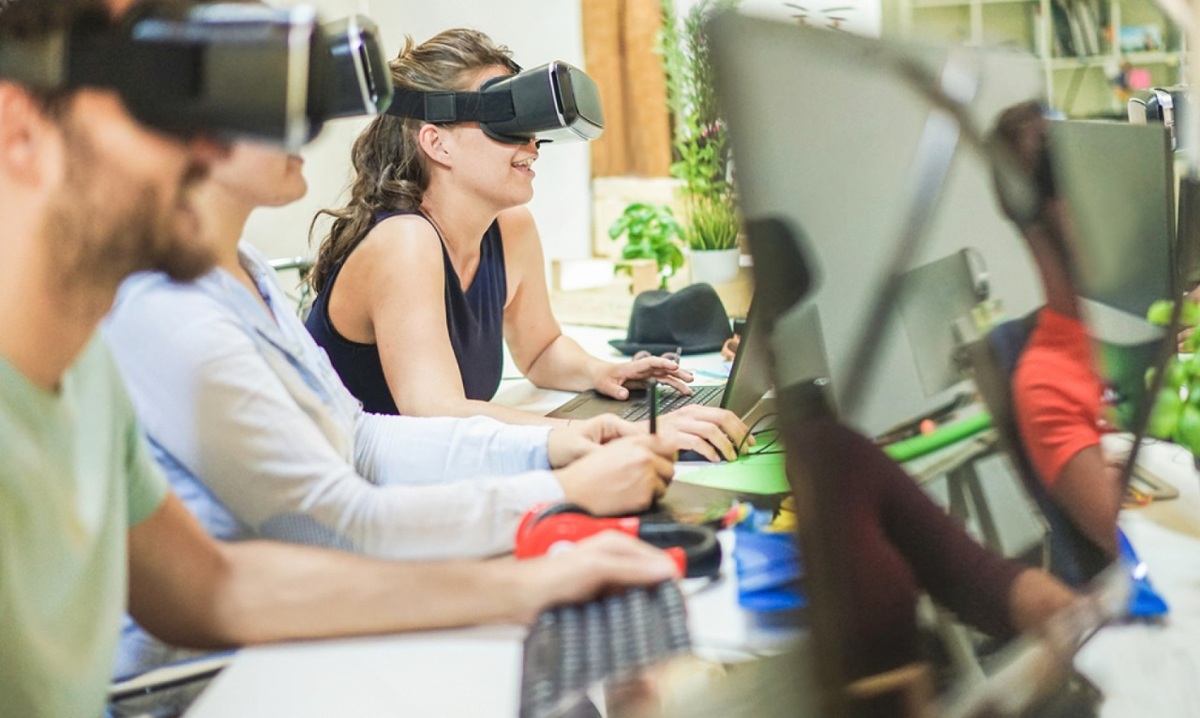Virtual Reality to Understand Machine Elements in Mechanical Design
.png)

Article By: Eva Jones
June 09, 2025 | 7:58 Minutes Read | Updated On: 11 June 2025
Understanding how machines work isn’t just about textbooks and theory anymore. For educators, mechanical engineering students, and product design professionals, the conversation is shifting—towards interactivity, towards realism, and, most importantly, towards virtual reality (VR).
This blog explores how VR is transforming the learning and application of machine elements in mechanical design—a domain often viewed as difficult, detail-heavy, and disconnected from the hands-on experience students and engineers actually need.
Who Should Read This?
This piece is for:
● Engineering faculty who are rethinking lab setups and curriculum delivery.
● Mechanical design professionals who train teams or prototype new mechanisms.
● University stakeholders focused on enhancing their mechanical engineering programs using modern technology.
Let’s begin with why this shift is happening now.
The Problem with Traditional Learning Methods
In most colleges, machine elements in mechanical design are taught using outdated visuals, static diagrams, and a theoretical focus that rarely connects to physical systems.
Ask any undergraduate student to explain the real-time interaction between a worm gear and a helical gear, and you’ll often hear a vague answer—even after hours of lectures.
Why?
● 2D drawings can't represent motion effectively.
● CAD tools require prior experience and aren’t intuitive for first-time learners.
● Physical machine components for practice are costly and not always available.
This is where virtual reality for the design of machine elements comes in—providing not just a visual but an experiential understanding.
What Are Machine Elements in Mechanical Design?
Before we get deeper into VR applications, let’s define the core subject. Machine elements refer to the basic components that make up a machine. These include:
● Shafts
● Bearings
● Gears
● Springs
● Fasteners
● Couplings
● Cams and followers
Mastery of these elements is critical in the analysis and design of machine elements—which form the backbone of mechanical systems used in industries ranging from automotive to aerospace.
The challenge isn’t just knowing what these are but how they behave under force, rotation, temperature, and pressure.
How VR Brings Machine Elements to Life
_34407.jpg)
_34407.jpg)
1. Interactive Visualization
Instead of static images, VR modules allow learners to rotate, scale, and examine every angle of a gear train or spring assembly.
● Watch a cam-follower motion in real time.
● See how misalignment affects bearing life.
● Zoom into stress points and friction zones.
This tactile interaction boosts comprehension far beyond what chalkboards and PDFs can offer.
2. Simulation-Based Analysis
One of the key breakthroughs of VR in the design of machine elements is the ability to run simulations inside a virtual lab.
● Apply force to a shaft and see real-time deformation.
● Modify gear tooth profile and instantly visualize changes in torque output.
● Evaluate wear patterns by running simulated cycles.
This supports a deeper analysis of machine elements without needing a physical setup.
3. Safe Failure Testing
Failure is a great teacher—but real-life failures can be dangerous and expensive. In a VR lab, students can safely explore:
● Fatigue failures in fasteners
● Gear failure due to overload
● Incorrect spring deflection under various conditions
This risk-free environment improves decision-making when it comes to designing and selecting elements of mechanical design.
Use Case: A Virtual Class on Spur Gears
Imagine a sophomore mechanical engineering class in a US university.
With VR headsets on, students walk through a virtual machine room. They inspect various machine elements in mechanical design, focusing on spur gears.
They learn by:
● Disassembling a gear assembly in VR
● Viewing stress concentration in loaded vs. unloaded states
● Comparing materials used in real-world applications
Assessments are built in: “Identify the module and pressure angle of this gear.” Correct responses unlock the next level.
The result? Engagement goes up. Understanding becomes second nature. And most importantly, students retain the learning longer.
Benefits for Educators and Institutions
Benefit |
Description |
|---|---|
Better Learning Outcomes |
Concepts like gear ratios, stress-strain behavior, and fatigue failure are understood faster and better through immersive learning. |
Reduced Setup Costs |
No need for expensive physical labs—VR minimizes infrastructure investment while maximizing accessibility. |
Scalable Teaching |
A single VR module can effectively support hundreds of students without wear and tear or instructor fatigue. |
Real-Time Performance Tracking |
Educators can monitor individual student progress, quiz results, and engagement metrics in real time. |
What Does the Future Hold?
In the next 3–5 years, it’s expected that:
● 70% of US engineering programs will incorporate some form of VR in the design of machine elements.
● Industries will use VR more widely for prototyping and training.
● Students with VR exposure will be better prepared for real-world roles.
The adoption curve is rising, and those who take the leap now will have a significant head start.
Final Thoughts
The old way of learning machine elements in mechanical design is slowly but surely giving way to something better. More engaging. More interactive. And more realistic.
Whether you’re training the next generation of mechanical engineers or building the machines of tomorrow, VR isn’t a luxury—it’s a necessity.
And when it comes to virtual reality for the design of machine elements, the results speak for themselves.


-min.png)
-min.png)
.png)